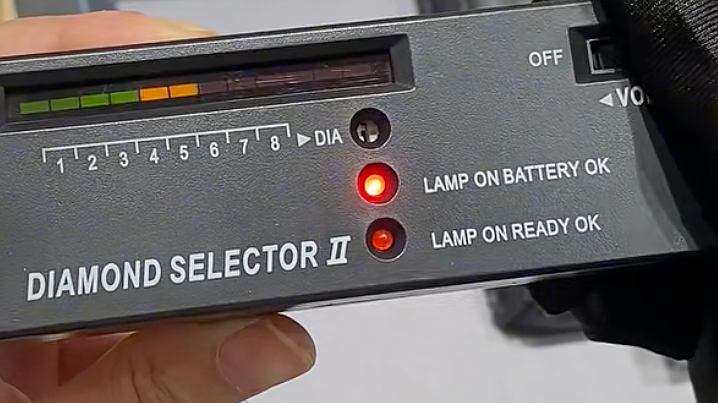Sustainable Choices: Earth-Friendly Engagement Rings
Choosing an engagement ring is a big decision. It’s not just about picking a beautiful piece of jewelry—it’s about showing love and making a commitment. But there’s more to consider. Your choice of engagement ring can also reflect your values, like environmental responsibility and ethical sourcing.
Over the past decade, many people have become more aware of how their purchases impact the environment and society. This includes engagement rings, which are often made from diamonds and metals that come with significant environmental and ethical costs. The good news is that there are now plenty of alternatives that focus on sustainability and fairness. Earth-friendly engagement rings offer a beautiful way to express your love while also showing that you care about the planet.
Let’s talk about earth-friendly engagement rings. These rings are designed with both beauty and environmental responsibility in mind. They are made with ethical and sustainable materials to help protect the environment and ensure fair treatment of workers.
Choosing an environmentally friendly engagement ring can be a bit complicated. You need to understand the impact of diamond mining, the difference between natural and lab-grown diamonds, and the importance of using ethical materials. This guide will walk you through everything you need to know. Whether you’re shopping for a ring, working in a jewelry store, or just curious, you’ll find helpful information about earth-friendly engagement rings.
Let’s dive in and see how choosing an engagement ring can mean more than just love. It can be a symbol of caring for the world.

What Are Earth-Friendly Engagement Rings?
Before we talk about earth-friendly engagement rings, it’s important to understand what they stand for. These rings are made with a focus on sustainability (protecting the Earth), fairness to workers, and transparency (being open about where the materials come from).
These rings shine with beauty while also having a positive impact on the planet and the people who help create them. Here’s what makes these rings special:
-
Ethically Sourced Stones
-
These stones are not conflict diamonds. They come from places that ensure fair treatment of workers. Ethical stones come from mines that follow strict guidelines to provide fair wages and safe working conditions. Mining is controlled to minimize harm to the environment and local communities.
-
Recycled Metals
-
Instead of mining new metals, these rings use materials from recycled sources. Mining for gold and platinum can cause serious environmental damage. By choosing recycled metals, jewelry makers reduce waste and pollution while creating stunning earth-friendly engagement rings.
-
Fair Labor Practices
-
Workers in the jewelry supply chain are paid fairly and treated with respect. Many traditional mines have poor working conditions, child labor, and unsafe environments. Environmentally friendly engagement rings ensure that workers are treated with dignity and provided with fair wages.
-
Transparency
-
Jewelers openly share where their materials come from so you can be sure of their ethical choices. Brands that value transparency provide information on sourcing, conflict-free certifications, and fair labor standards. This helps you make an informed decision that aligns with your values.
Choosing an earth-friendly engagement ring is an empowering decision. It shows that you care about the planet and the people who create these rings. It also supports companies that are working toward sustainability. By purchasing ethical jewelry, you send a message to the industry that consumers demand more responsible products.
The Environmental Impact of Traditional Diamond Mining
Traditional diamond mining has a huge environmental impact:
-
Deforestation & Habitat Destruction – Mining operations often destroy forests and wildlife habitats.
-
Water Pollution & Scarcity – The process consumes large amounts of water, affecting local communities.
-
Air Pollution & Climate Change – Mining releases harmful gases that impact air quality.
-
Community Displacement – Local populations are often forced to relocate due to mining activities.
That’s why many consumers are switching to environmentally friendly engagement rings that use lab-grown diamonds or recycled materials.

Lab-Grown Diamonds vs. Natural Diamonds
When choosing a diamond, you have two main options:
Lab-Grown Diamonds
✅ Created in a controlled lab environment, mimicking the natural process
✅ Identical in appearance and durability to natural diamonds
✅ More affordable and eco-friendly
✅ No harmful mining involved
Natural Diamonds
❌ Formed over billions of years underground
❌ Mining causes environmental damage and ethical concerns
❌ Often more expensive due to rarity
The Importance of Choosing Ethical Materials
Recycled Metals
Ethical materials are sourced in ways that protect workers and the environment. This includes using recycled metals and fair trade gold, which are better alternatives to newly mined materials.
Recycled metals allow jewelry to be made without additional mining. For instance, gold from old jewelry or electronics can be refined and reused, reducing environmental impact and waste.
Fair Trade Gold
Fair trade gold is another ethical option. It comes from mines that follow strict environmental and social standards, ensuring fair wages and safe working conditions for miners. By purchasing fair trade gold, you support responsible mining practices and help improve the lives of workers.
By choosing ethical materials, you contribute to a safer and more sustainable future for both workers and the environment.
The Rise of Earth-Friendly Jewelry
Consumers are increasingly seeking earth-friendly engagement rings and sustainable jewelry options. More people want to know where their jewelry comes from and whether it aligns with their values.
Jewelry brands are responding to this demand by offering rings made from recycled metals, conflict-free diamonds, and other ethical materials. Companies are prioritizing sustainability and transparency, giving customers more options for environmentally friendly engagement rings.
This shift is pushing the industry toward more ethical and eco-friendly practices. As demand grows, brands are becoming more open about sourcing and production, making it easier for consumers to make informed choices.
Conclusion: Why Earth-Friendly Rings Matter
Choosing an earth-friendly engagement ring is about more than just jewelry. It’s a decision that reflects your values, showing love not only for your partner but also for the planet and future generations.
An environmentally friendly engagement ring is a symbol of commitment—to your loved one and to a more sustainable world. By making an ethical choice, you contribute to fair working conditions, environmental protection, and a positive shift in the jewelry industry.





